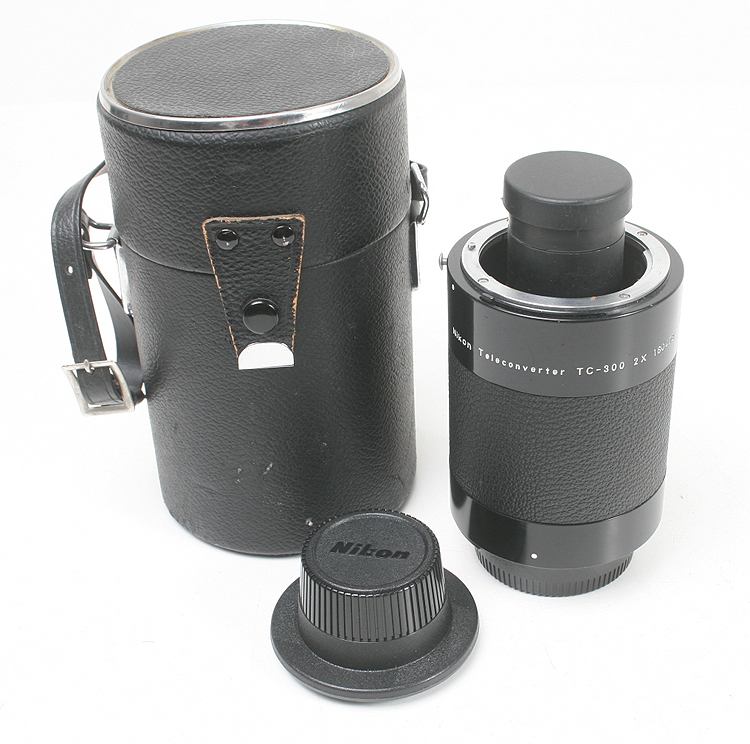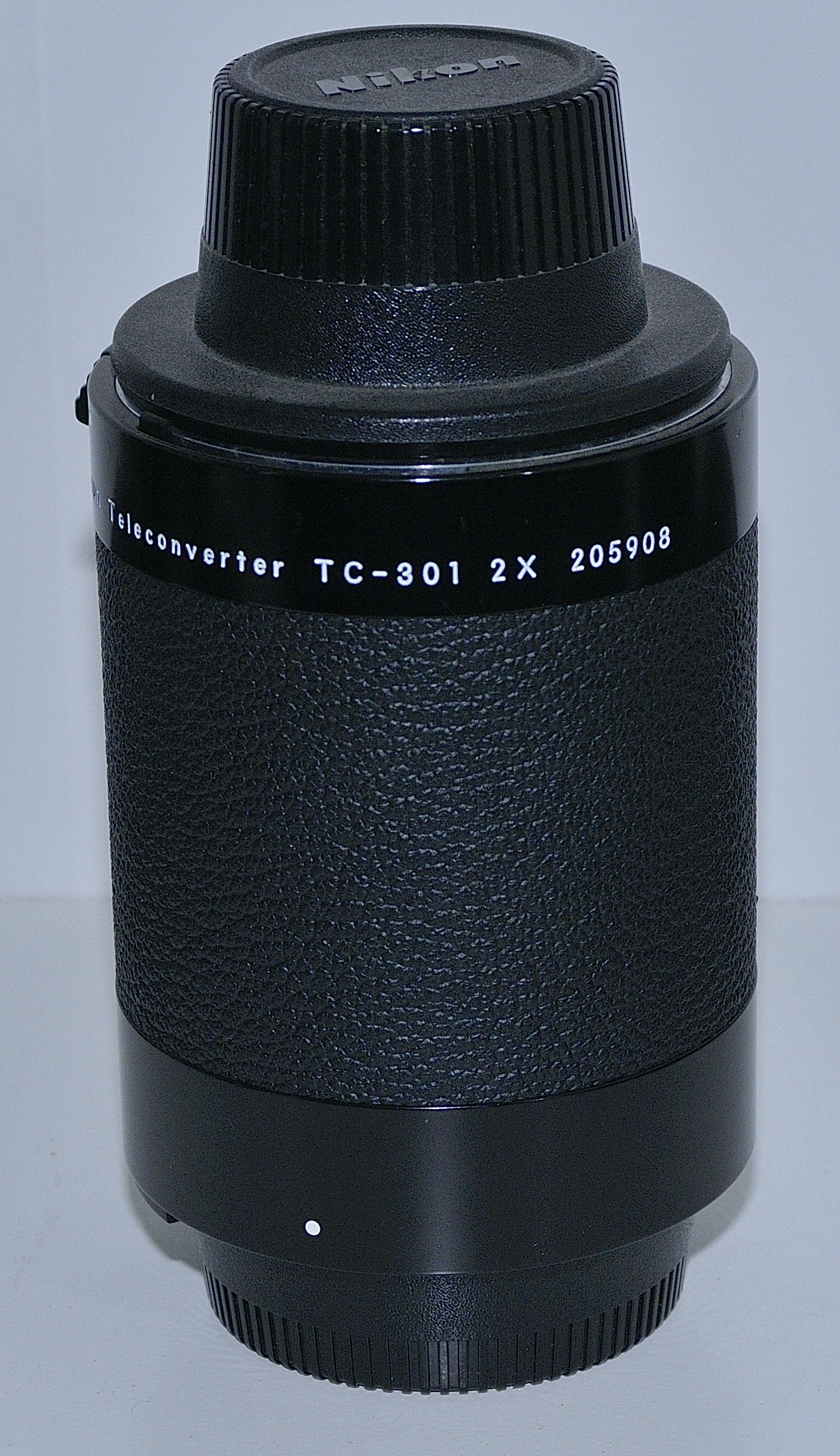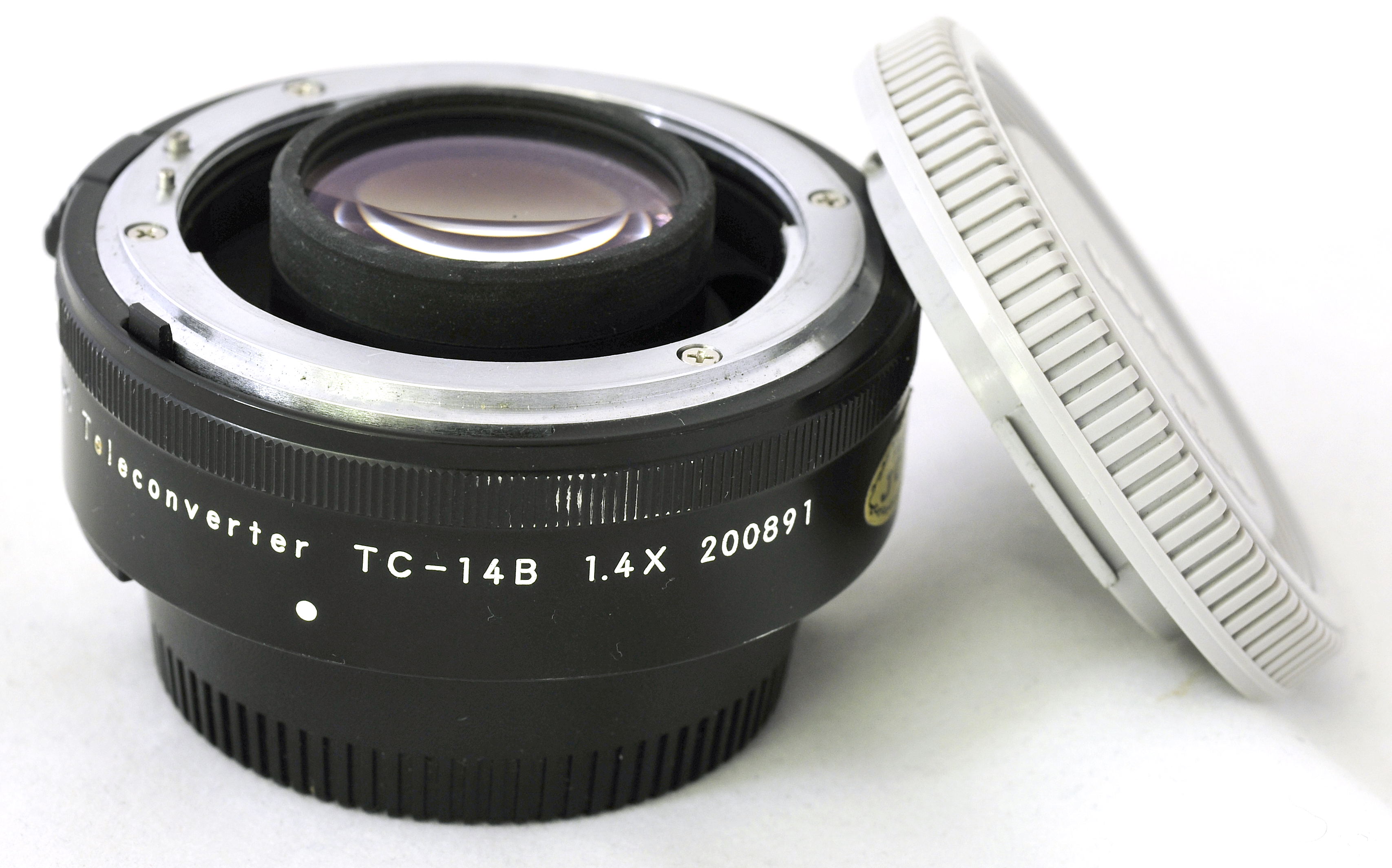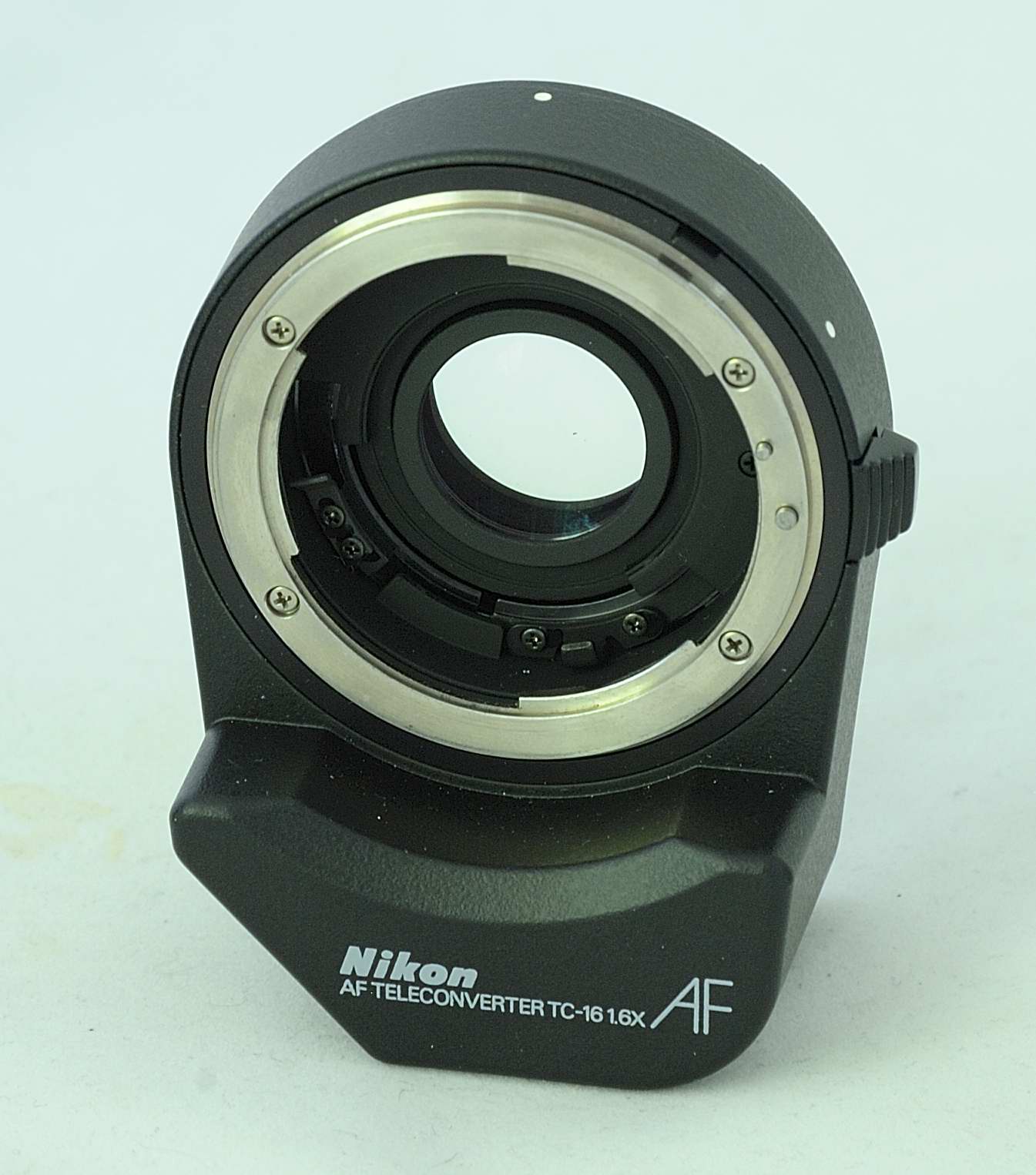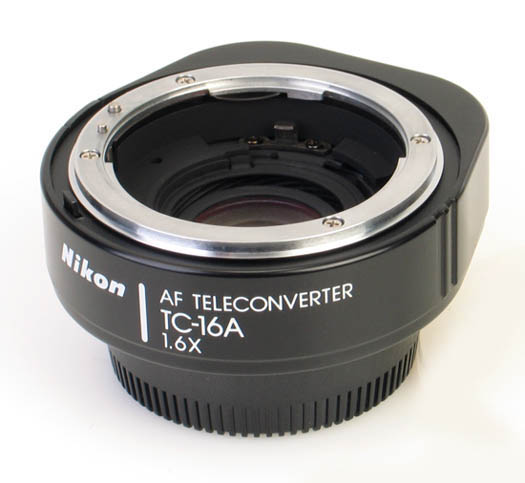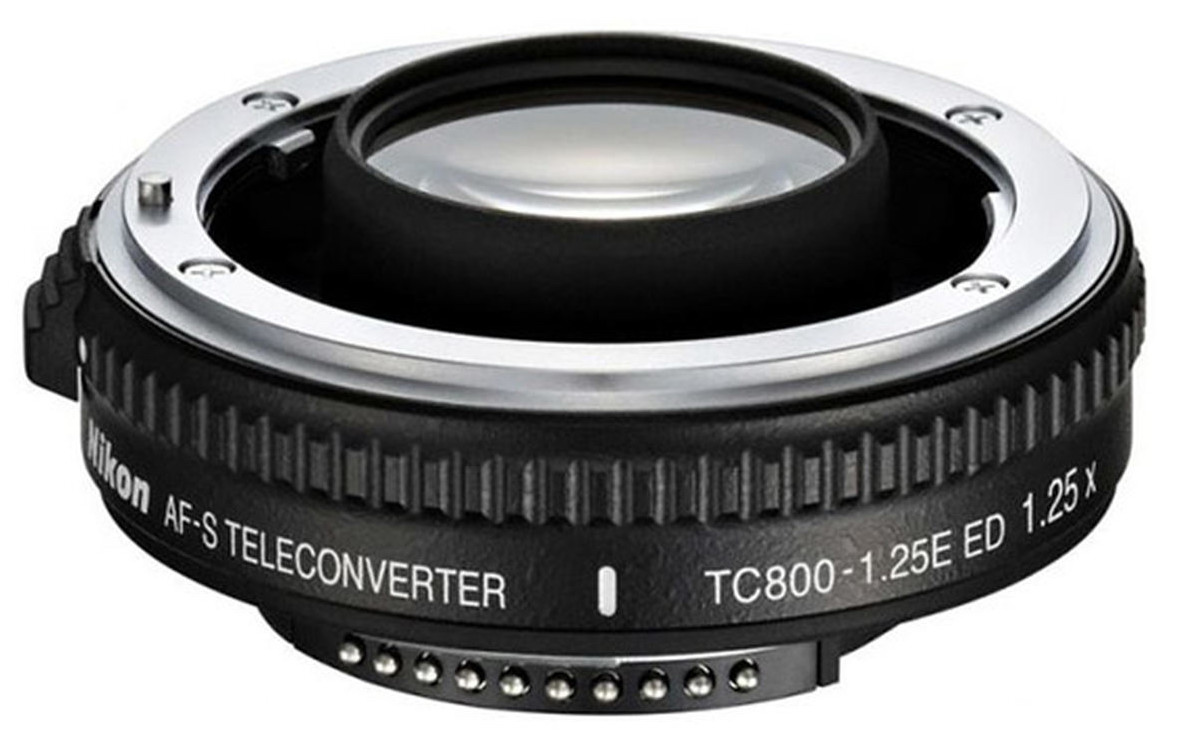Nikon teleconvertersIntroduction In general photography a converter is an optical system, placed behind or in front of a lens, to change the focal length of the lens in use. Even a single macro-lens put in the filter thread of any lens is a converter. This chapter - however - deals with Nikon converters that can be placed in between a camera body and a lens. Nikon Corporation has given these tele-converters the code TC in front of a number, indicating (in most cases) the magnification of the focal length of the lens in use. Nikon never produced tele-converters for its rangefinder cameras. Relatively late Nikon introduced its first tele-converters for its single lens reflex cameras in 1976. Many third brands were available much earlier and this fact together with the great demand for converters, equaling the optical quality of all Nikkors, Nikon decided to produce its own converters. With great respect to the capabilities of Nikon´s optical engineers optical performance of a converter-lens-combination doesn´t always improve. Most converters can be used as an ´emergency´ replacement for a long and heavy telelens. As all Nikkors are designed individually and have their own optical specifications a teleconverter, that has to fit more than one lens, will - inevitably - be the result of many compromises. But if you need a teleconverter choose the best Nikon TC you can get, as they will match mechanically (all connectors, etc.) and optically (coating, etc.) the Nikkor lens in use much better than any other converter. Limitations!! Not all converters can be used on all Nikon SLR´s or Nikkor lenses, although all Nikon TC-converters have the famous F-mount on both sides. Some were specifically made for the use on just one camera or one lens. The compatibility will be mentioned in the review of each teleconverter. Be aware of the fact that lenses with a G-mount cannot be used on the older teleconverters (those without electronic contacts). Do not use more than one converter on a camera body and lens combination. Not all converters can be used on another converter. It may even damage a converter!. Optical performance of more than one converter is very bad, too! Each converter in use on any lens will decrease the amount of light that comes trough the lens. You may loose the equivalent of 1 up to 2 stops (f-numbers) depending of the converter*. The exposure meter in the SLR camera will measure the right exposure without any problem, unless you are using a lens with a maximum aperture of smaller than f/5.6 (or higher f-number). If you are using an auto focus camera and auto focus lens the AF-sensor in the camera may not work if the maximum aperture of the lens-converter-combination is smaller than f/5.6. The magnification of the focal length of the lens in use depends on the magnification power of the converter (see below). The minimum focusing distance of the lens-converter-combination - however - will remain the same as that of the lens in use, although the depth of field (DOF) will be halved. Converters for Z-lenses are reviewed at the bottom of this page. * The maximum aperture decreases to the square of the magnification factor and the exposure has to be extended by the square of the magnification factor. TC-1 The TC-1 was introduced in 1976 together with the TC-2. The TC-1 has 7 elements in 5 groups and is weighting in at 230 gram. It can be used on all older Nikon cameras and lenses, having no AI-coupling system, thus build before 1977. Only lenses with a focal length up to 200mm. and a maximum aperture of at least f/2 can be used. The magnification factor is 2. TC-2 The TC-2 has an optical construction of 5 individual elements and can be used with lenses with a focal length of 300 mm. and more and a maximum aperture of at least f/2.8. The TC2 weighs in at 280 gram. The magnification factor is 2. Note: Both the TC-1 and TC-2 can be used on non-AI cameras and lenses only. Both converters have a coupling mechanism for the ´famous´ meter coupling fork. They can´t be used on cameras and lenses build after 1977. TC-200 In 1977 this modified converter was introduced to be used on the newer cameras and lenses with the AI-coupling system. The optical system is identical to the older model. It can be used with lenses with a focal length up to 200 mm. and (exception to the rule) the Reflex-Nikkor 8/500 mm. Magnification factor is 2. TC-300
Together with the TC-200 this converter, meant for AI-lenses with a focal length of 300mm and more, was introduced. Magnification factor is 2. TC-201 In 1983 this converter, modified for all AIS-lenses up to a focal length of 200 mm., was introduced. It can be used on Nikon SLR´s with an automatic exposure program, like the Nikon FG, FA, F-301 and F-501. Magnification factor is 2. TC-301
This is the AIS-version of the TC-300. It was introduced in 1983 and has a magnification factor of 2. TC-14 This converter was introduced in 1978. It has an optical design of 5 individual elements and has a magnification factor of 1.4. The lost of light is an equivalent of just one f-stop! All AI-lenses with a focal length of at least 300 mm. or more can be used. As an exception to this rule the Nikkor 3.5/135mm., Nikkor 2.8/180mm. (NOT the ED-version), Nikkor 2/200mm., Medical-Nikkor 4/120mm. and the Micro-Nikkor-IF 4/200mm. will fit as well. TC-14A This converter, introduced in 1983, can be used on all AIS-lenses with a focal length up to 300mm. (except the GN-Nikkor 2.8/45mm.). Also Zoom-Nikkors with a focal length starting with 100mm. may fit. Magnification factor is 1.4. TC-14B
Together with the TC-14A this converter was introduced in 1983 to fit all AIS-lenses with a focal length of at least 135mm. Except the Nikkor 2/135mm., Nikkor 4/200mm., and the Nikkor-ED 2.8/180mm. Also zoom-Nikkors like the 2.8/80-200 mm. can be used. Most of these converters have a specially made cap: Nikon BF-3A. Magnification factor is 1.4, but you are loosing just one f-stop.. TC-14C This very special converter was designed for the exclusive use on the very fast Nikkor 2/300mm. IF-ED. Resulting in a fast tele-cannon 2.8/420mm.!! Note: All teleconverters reviewed hereto can be used on manual focus cameras and manual focus lenses. Except the TC-1 and TC-2 all others can be used on some auto focus cameras and auto focus lenses, without auto focus featuring of course. Some modern AF-cameras with the G-lens mount can´t be used. Not on all modern (film and/or digital) cameras exposure programs or metering will function properly. The converters mentioned hereafter will fit most modern film and digital reflex cameras. TC-14E This converter was introduced in 1994 to be used on all AF-I and AF-S Nikkor telelenses with a focal length of at least 300mm. Auto focus will function only if used on AF-S lenses as they have a built-in focusing motor. There is no connection to the AF-drive of older AF-cameras, thus AF will work on the Nikon F4, F5, F6, F100, F90, F70, and all digital SLR's only. Magnification factor is 1.4. Decrease of f/1-stop. TC-14E II This converter, introduced in 2001, ia an upgrade of the TC-14E. It works on all modern AF-lenses and AF-cameras (film and digital). It is (so far) the only converter (and TC-20E II) that will work on any VR-lens. Magnification factor is 1.4; while the decrease of light is just f/1-stop.
TC-14E III Mid-April 2014 Nikon introduced this teleconverter. It has an optical formula of 7 elements in 4 groups, where the front and rear element are coated with fluorine. Because of the maximum aperture coupling ridge and the minimum aperture signal post are eliminated 'FEE" will be displayed on the camera body when older AF or AF-S lenses are used, thus disabling shooting. Magnification factor remains 1.4 and the loss of light is just 1 stop. The teleconverter weights in at 190 gram. TC-16
This first AF-teleconverter was introduced in 1983 for the use on the Nikon F3-AF. Mounted on a Nikon F3-AF nearly all MF-Nikkor lenses with a focal length of 24 up to 200mm. and a maximum aperture of at least f/2 can be used. When a manual focus lens is mounted and the lens is focused at infinity the AF-sensor in the Nikon F3-AF view finder will use the TC-16 as focusing unit. Magnification factor is 1.6 and the decrease in light is 1.3. Thus a manual focus Nikkor 2/135mm. will become an Auto focus Nikkor 2.6/216mm.!! As not many Nikon F3-AF cameras and converters were sold, both are rare. TC-16A
A ´nice variation on an old theme´ is this converter which was introduced in 1986. It can be used on a limited number of cameras (F-401, F-501, F-801, F90, F4, F5 and D2-series only!) with manual focus lenses with a focal length up to 300mm. and a maximum aperture of at least f/2. If set to infinity the camera will detect and set the lens in focus. When using telelenses with a wide focusing range the photographer has to help this system a bit. Up to modern AF-standards this is a slow system. Magnification and aperture decrease is similar to that of the TC-16. TC-17E II This converter, introduced in 2004, has many features like the TC-14E II. It has a magnification factor of 1.7 and decreases the aperture with a factor of 1.5. It can be used on all modern digital and film SLR´s and AF-lenses, including the VR-lenses. TC-20E This converter with a magnification factor of 2 was introduced in 1993. It has the same features as the TC-14E. It can be used with all AF-I and AF-S lenses with a focal length of at least 300mm. TC-20E II Except its magnification factor of 2 this converter - introduced in 2001 - equals the TC-14E II and TC-17E II. Mid December 2009 an upgrade of this teleconverter (TC-20E-III) was introduced, featuring 7 elements (of which one is an aspherical lens element) in 5 groups.
TC-800 - 1.25E ED
In January 2013 Nikon introduced a very special tele-converter for the AF-S Nikkor 800mm/5,6 VR FL ED lens. This sophisticated teleconverter has an optical formula of 5 elements (of which one is made of ED-glass) in 3 groups and has a magnification ratio of 1,25, making the 800mm a 1000mm/7,1 tele-cannon. The converter ads a 135 gram to the 4,590 gram heavy tele-Nikkor.
An overview of all converters with an F-mount can be found here.
Tele-converters with Z-mountLate July 2020 Nikon introduced two tele-converters specially for the Z-lenses: Z-TC-1.4x and Z-TC-2.0x more info will be added asap
|
